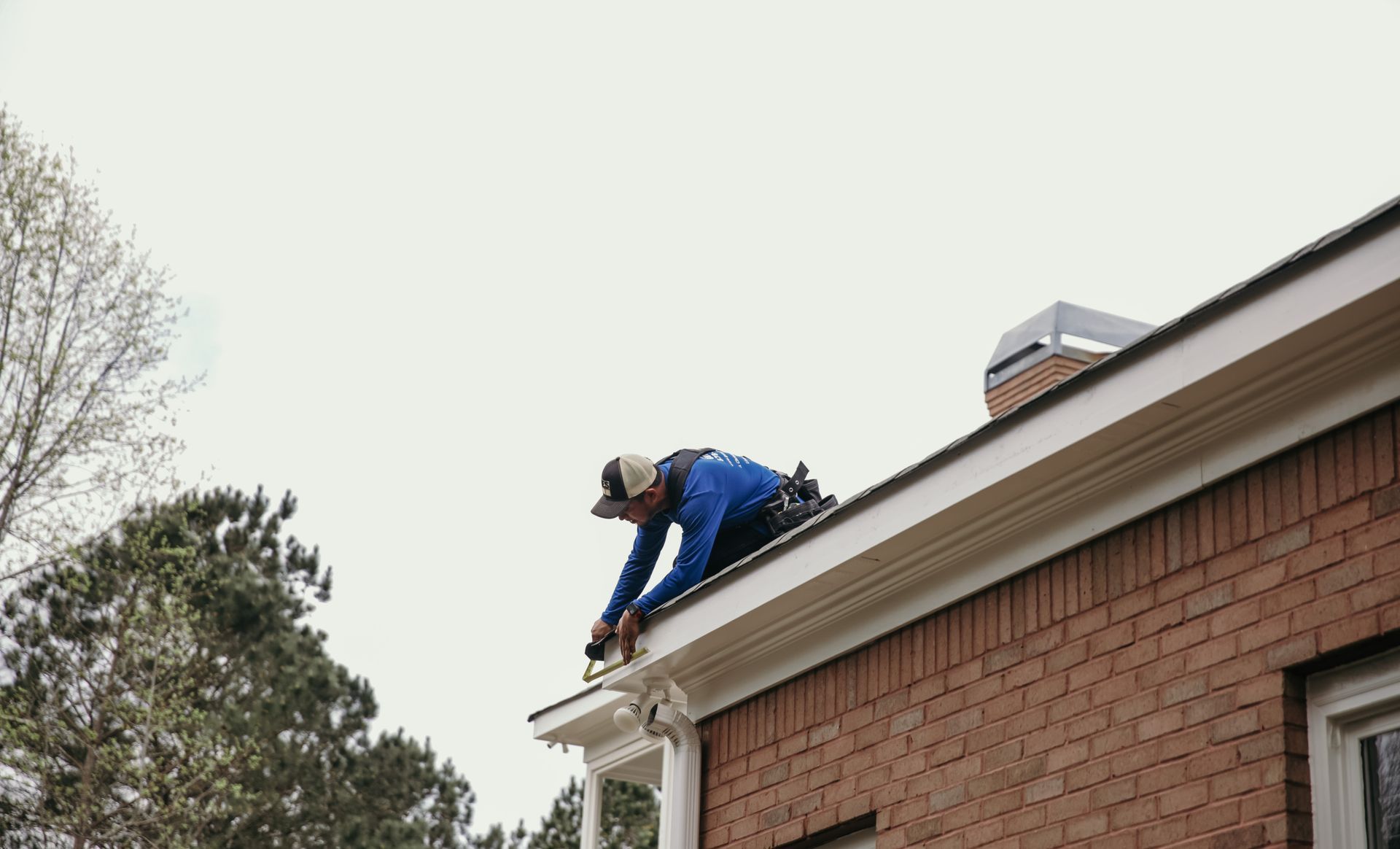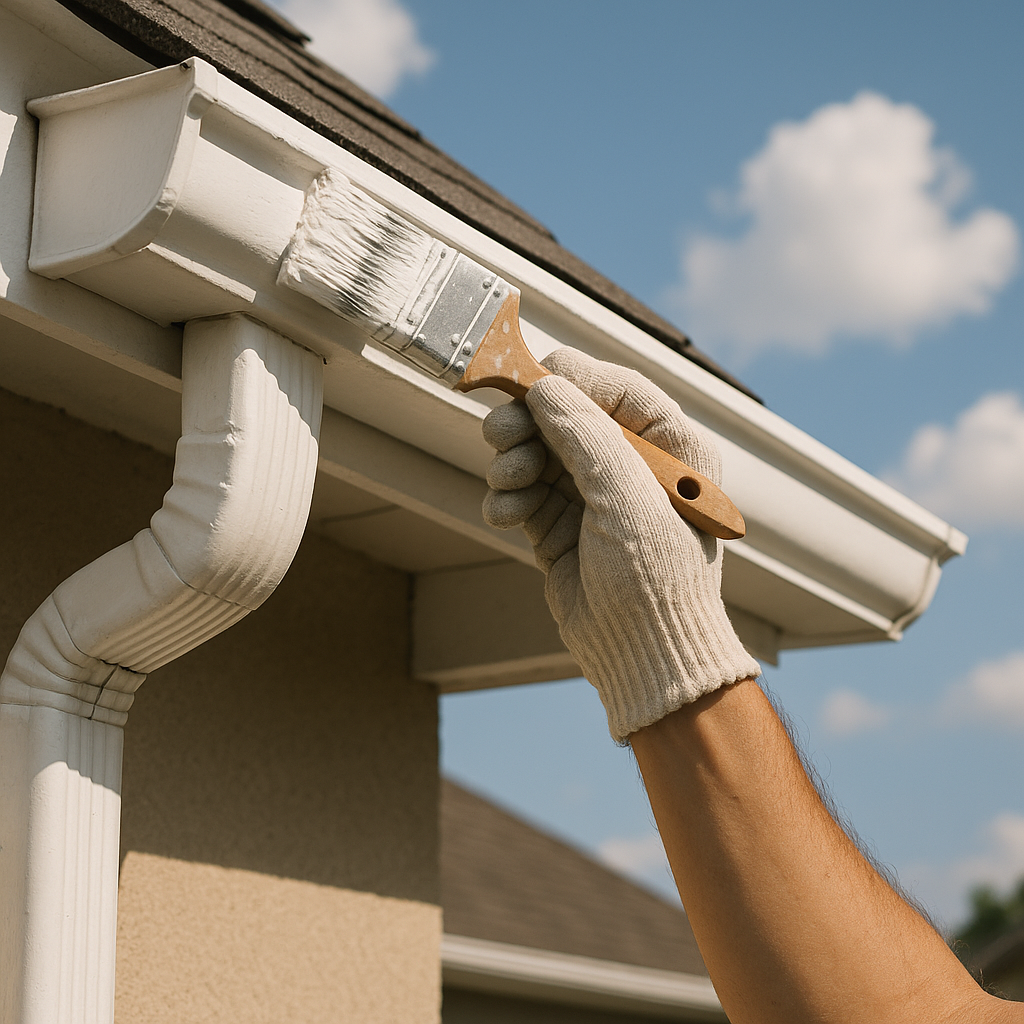How to Determine What Gutter Size You Need for Your Roof
Choosing the right gutter size might seem like a minor detail, but it plays a huge role in protecting your home’s structure. A properly sized gutter system keeps rainwater away from your roof, siding, and foundation. Whether you're planning a new gutter installation or replacing old ones, learning how to determine what size fits your roof is essential.
In this guide, we’ll explain everything from standard gutter dimensions like 5-inch and 6-inch gutters to how to calculate gutter capacity based on roof pitch, square footage, and maximum rainfall intensity. If you're a homeowner trying to prevent water damage, this article has what you need to know, plus tips for pairing your gutter system with the right gutter guard and downspouts.
Key Takeaways
- Gutter size matters—undersized systems can lead to overflow and water damage
- 5-inch gutters work for most homes, but 6-inch gutters are better for steep roofs or heavy rainfall
- Use roof area, pitch, and inches per hour rainfall data to determine gutter size
- Match downspouts to your gutter and add extra downspouts for larger systems
- A gutter guard improves efficiency, but should be chosen based on your gutter size
- Use a level and a tape measure to take accurate measurements before gutter installation
Why Gutter Size Matters for Every Home
Getting the right gutter size is more than just matching the look of your roofline—it’s about function. Properly sized gutters are essential for managing rainfall and keeping water away from your home’s foundation. If your gutter is too small, it won’t handle heavy flow, especially during storms, leading to overflow that can damage your siding, landscaping, and even your roof.
Ignoring gutter size can be a costly mistake for a homeowner. Even standard gutters that work fine in light rain might fail when tested during high maximum rainfall intensity. That’s why it’s important to measure your roof area, know your local rainfall data, and understand how gutter and downspout sizes work together.
In short, choosing the appropriate gutter size helps maximize gutter capacity, improve water flow, and ultimately protect your home from avoidable water damage.
What Is the Standard Gutter Size Used Today?
The standard gutter size for most residential properties is either 5-inch or 6-inch, typically in the K-style configuration. 5-inch gutters are common for homes with lower roof pitches and moderate rainfall, while 6-inch gutters are ideal for larger roofs or areas prone to heavy rain.
Gutter Sizing Comparison Table
| Gutter Size | Type | Best For |
|---|---|---|
| 5-inch | K-style | Standard roof with mild to average rainfall |
| 6-inch | K-style | Larger roofs, steep roofs, or high rainfall areas |
| 7- or 8-inch | Custom Order | Commercial use or oversized roof systems |
The difference may seem small, but 1 inch can mean significantly more capacity. In fact, a 6-inch gutter can handle nearly 40% more rainwater than a 5-inch one. So, if you live in a region where rainfall intensity is high, you might need larger gutters, especially if your roof is complex or has multiple slopes.
Whether you choose 5-inch gutters, 6-inch K-style gutters, or even oversized gutters, the key is to ensure that the gutter system is sized to perform, not just look good.
How to Determine Gutter Size Based on Roof Area
To determine what size gutter you need, you’ll start by calculating the square footage of your roof area. This tells you how much rainwater your gutter system needs to handle during a storm. Larger roof surfaces shed more water, which means you’ll need bigger or more efficient gutters and downspouts.
How to Calculate Gutter Size
- Measure the length and width of each section of your roof.
- Multiply to get the square feet of drainage area for each section.
- Adjust based on roof pitch (steeper roofs collect more water faster).
- Factor in your local maximum rainfall intensity (measured in inches per hour).
- Match your total square footage and rainfall data to the correct gutter size using a sizing chart or calculator.
A basic rule is that you need a downspout for every 600 square feet of drainage, and you may need extra downspouts if you use small gutters or live in a high-rain area.
If you’re unsure, use a 2-foot level and a tape measure to get accurate dimensions. Then, you can confidently choose the right gutters and ensure proper water flow.
What’s the Difference Between 5-Inch and 6-Inch Gutters?
At first glance, 1 inch may not seem like a big deal, but in the gutter world, it makes a huge difference. The jump from 5-inch to 6-inch gutters means more capacity and better protection during storms.
Key Differences:
| Feature | 5-Inch K-Style Gutters | 6-Inch K-Style Gutters |
|---|---|---|
| Capacity | Standard | Higher gutter capacity |
| Best For | Moderate rainfall | Heavy rainfall or steep roofs |
| Downspout Size | Smaller | Can pair with larger rectangular downspouts |
| Appearance | Slim profile | Bulkier but functional |
5-inch K-style gutters are a solid pick for most homes with a typical roof pitch and square footage. But if your gutter is 6 inches wide, you’re giving your gutter system a leg up when dealing with torrential downpours or complex roof designs.
Choosing the right gutter size between the two will depend on your home’s needs and the local rainfall intensity in your region.
When Should You Use Oversized Gutters?
Oversized gutters, such as 7- or 8-inch systems, aren’t just for commercial buildings. In some residential cases, they’re exactly what you need—especially if your roof is large, complex, or prone to heavy rainfall.
When to Consider Oversized Gutters:
- You have a large roof area with steep slopes
- Your local region experiences maximum rainfall intensity
- You want fewer downspouts and higher gutter capacity
- Your current gutter system is too small and leads to overflow
Remember: if your gutter can’t handle the flow, it can lead to pooling near your fascia and even water damage inside the home. This is where a properly sized gutter—even if it’s larger than average—makes all the difference.
Some homes with intricate hip roofs, multiple valleys, or areas that collect water aggressively may even require a custom order for wider gutters and rectangular downspouts to match.
Are K-Style Gutters Better for High Rainfall?
K-style gutters are popular for a reason—they’re designed to manage more rainwater without taking up additional space. The inner shape mimics crown molding, which not only improves curb appeal but also increases gutter capacity compared to traditional half-round systems.
Why K-Style Works for Heavy Rain:
- The flat back sits flush against the fascia for easy mounting
- The inner shape allows for more water to flow with less chance of overflow
- Available in both 5-inch and 6-inch K-style options for different levels of rainfall
Whether you're installing new gutters or replacing your old setup, choosing K-style gutters—especially 6-inch K-style gutters—is a smart move for areas with frequent downpours. When paired with well-placed downspouts, this setup creates an effective gutter system built to last.
How Does Roof Pitch Affect the Size of Your Gutters?
Your roof pitch (how steep the roof is) directly affects how fast rainwater moves and how much your gutter system needs to handle. A steeper slope means faster water flow, which increases pressure on your gutters.
How to Factor in Pitch:
- A steep roof increases your effective drainage area
- You’ll likely need larger gutters or extra downspouts
- Use a 2-foot level and tape to measure the pitch and calculate the load
The steeper the pitch, the more aggressive the rainfall runs toward the edge of the gutter. For high-pitch roofs, a 6-inch gutter with properly placed rectangular downspouts can help prevent overflow and extend the life of your system.
What Role Do Downspouts Play in Gutter Sizing?
Downspouts are just as critical as the gutter itself. No matter how well-sized your gutters are, if downspouts are too small or spaced too far apart, you’ll still face issues with water damage and overflow.
Key Downspout Guidelines:
- Place a downspout every 40 feet of gutter
- For large or complex roofs, you’ll need to add extra downspouts
- Match downspout size to your gutter size—larger gutters require larger downspouts
Choosing the right gutter and downspout sizes together ensures consistent flow. If you’re upgrading to 6-inch gutters, also consider switching to rectangular downspouts for better capacity and cleaner water exits.
Gutter Guards and Their Impact on Sizing and Efficiency
Installing a gutter guard doesn’t just reduce debris—it can also improve the efficiency of your gutter system. But if you’re adding a gutter guard, make sure it doesn’t restrict flow or interfere with the fascia.
Benefits of Gutter Guards:
- Prevent clogs that reduce gutter capacity
- Extend the life of your gutters by minimizing weight and corrosion
- Help maintain consistent water flow during storms
Just be aware that if the gutter guard is not sized correctly, it could affect performance. Pair your gutter guard with the right gutter size, especially when using 5-inch systems, where space is more limited.
How to Measure and Plan for Your Gutter Installation
Accurate measurements are the foundation of proper gutter sizing. If you plan to do the math yourself, learning how to measure correctly will ensure that your gutter installation will perform well in the long term.
Step-by-Step Measuring Tips:
- Measure the length of the roof edge where gutters will be installed
- Determine the square footage of your roof using width x length
- Adjust for roof pitch and check local rainfall (in inches per hour)
- Choose your gutter size and downspout setup based on capacity needs
- Don’t forget to calculate the total gutter and downspout sizes together
Once you have the total, you can choose between 5-inch, 6-inch, or even oversized gutters. Whether you hire a pro or do it yourself, using a level and a tape measure ensures you size things right the first time.
Conclusion
Sizing your gutters properly isn’t just about preference—it’s about performance. A properly sized gutter system handles the flow, prevents water damage, and helps your roof and siding stay in top shape. From choosing between 5-inch and 6-inch gutters to factoring in roof pitch, square footage, and local rainfall, getting it right up front saves you from expensive problems later.
Are you unsure which gutter size is best for your home?
Contact Gutters 4 Less today for a free consultation and expert advice on choosing and installing the perfect gutter system for your roof.





